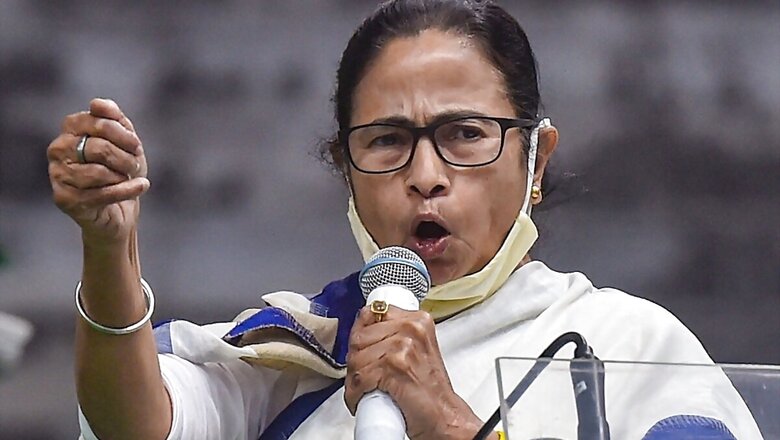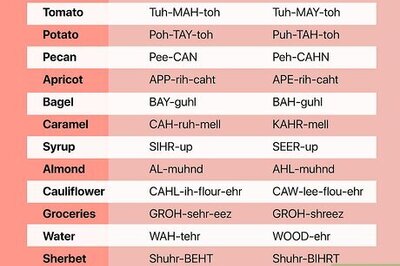
views
Mamata Banerjee’s TMC is going to rule West Bengal for the next five years irrespective of the Nandigram election outcome she may or may not win. But her party has been able to repeat the performance of the 2016 Assembly elections when it had won a stellar 211 of the 293 seats. Current trends suggest the TMC is likely to gain similar numbers.
The TMC and the BJP campaigned feverishly, with the BJP bringing its national leaders, including Prime Minister Narendra Modi, while the Banerjee campaigned in a wheelchair. Here’s a look at what worked for Banerjee despite the massive blitzkrieg campaign by the BJP targeting her 10 years of rule since 2011.
A fighter
Her decision to contest from Nandigram showed her fighting spirit, an attitude considered a must for a leader, irrespective of the fact that the BJP played its bait on Suvendu Adhikari, once a Mamata confidant and now a BJP leader, who is also known as a local Nandigram hero.
She took a risk, which it seems, became her most appealing campaign point.
An underdog like Indira Gandhi
Banerjee played an underdog as Indira Gandhi did in the 1971 election when she defeated a united opposition or like Narendra Modi when he defeated an entire opposition in 2014. She successfully exploited the opposition targeting her the same way both Indira Gandhi and Narendra Modi did.
Banerjee, bound to a wheelchair, and being attacked by the opposition leaders only worked for her advantage.
The lone CM face
The fact that the opposition did not have a chief ministerial face only compounded her appeal, like it helped Modi nationally, especially after the en masse defection of TMC leaders to the BJP including TMC’s second-in-command Adhikari.
People had no other leader to look for before a towering personality who built her political career on the Singur and Nandigram land acquisition protests
A polarisation battle balanced
She tried to balance her appeal to both Hindu and Muslim electorates with the rise of the BJP in West Bengal. If she earlier supported Muslims with schemes, giving monthly allowances to imams and muezzins, and support to Muslim religious structures, the BJP’s rise forced her to support various Hindu festivals like Durga Puja. She also extended a helping hand to Hindu priests as well.
Since 2012, imams and muezzins get monthly allowances. Imams get Rs 2500 a month, while Rs 1,000 is given to muezzins who give the aazaan (call to prayer). In a balancing act, Mamata Banerjee, in September last year, announced a monthly allowance of Rs 1,000 for Brahmin priests and 8,000 free houses. The initiative called “Jai Bangla” also covers priests of other communities like Christians, Jains, Buddhists and Parsis, including Tribals, the current budget says.
Welfare schemes
Banerjee announced mass welfare schemes, much on the lines of Tamil Nadu, targeting women and poor people like Maa Canteens that provide food to the poor for Rs 5, or the Kanyashree Scheme since 2013 that gives financial assistance to poor girls. The scheme helps girls between the age of 13 to 19 through cash transfers for their education and empowerment and has seen 67,96,966 beneficiaries so far.
The Rupashree Scheme, under which girls get Rs 25,000 for their marriage, has seen 8,49,138 beneficiaries. Monthly pension in the state has been made uniform at Rs 1,000 for all the existing schemes and the initiative has covered 23,16,058 beneficiaries so far.
The outsider vs insider battle
Banerjee was also to garner a share of Left Front-Congress voters who had supported the BJP back in the Lok Sabha polls in 2019, as it reflects in the current trends, by calling BJP leaders, who came to campaign in the state, ‘outsiders’.
The TMC is currently leading at 214 seats while BJP has been restricted to 75 seats.
Read all the Latest News, Breaking News and Coronavirus News here. Follow us on Facebook, Twitter and Telegram.



















Comments
0 comment